Abstract
1. An examination has been made of the uptake of [131I]L-thyroxine and L-3,5,3′-tri-iodothyronine by the perfused rat liver.
2. With no serum in the perfusion fluid and at flow rates less than 1·5 ml./g.min the liver removes about 85-90% of the hormone passing through in the perfusion fluid. At higher flow rates, the proportion of the hormone taken up is reduced and the results suggest that half of the hormone would be removed if the perfusion fluid spent about 1 sec in the liver.
3. The percentage of the hormone extracted by the liver is not affected by variations in temperature (between 22 and 37° C) or by variations in thyroxine concentration (between 1 × 10-4 and 1 × 10-1 μg/ml.).
4. Accumulated radioactive thyroxine is released only slowly into the perfusion fluid. The rate is doubled by perfusion with solutions containing 10% serum.
5. With serum present in the perfusion fluid the uptake of thyroxine can be resolved into two distinct components. A small proportion is taken up very rapidly and a large proportion very slowly. It is suggested that the rapid process represents uptake of free thyroxine and the slow process uptake of thyroxine released from the serum protein; the half-time of the slow process being a measure of the rate of release.
6. The proportion of thyroxine taken up by the fast process is about 9% in solutions containing 1% serum and falls progressively at higher serum concentrations.
7. With tri-iodothyronine the proportion of the hormone in the free state and the rate of uptake by the slow process are much greater than with thyroxine.
8. In the presence of high concentrations of thyroxine the proportion of the hormone in the free state and the rate of uptake by the slow process are both increased.
9. The rate of release of thyroxine from its binding protein is proportional to the percentage of the hormone in the free state.
Full text
PDF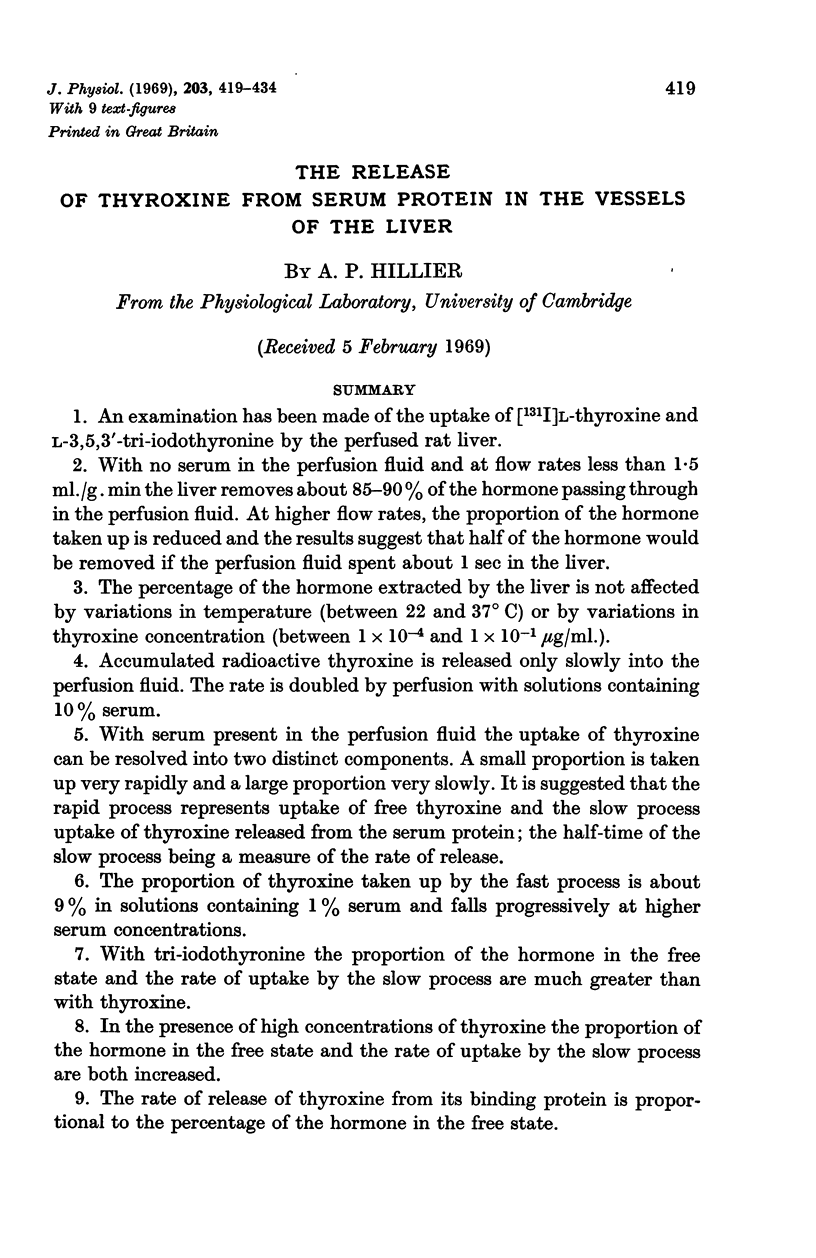
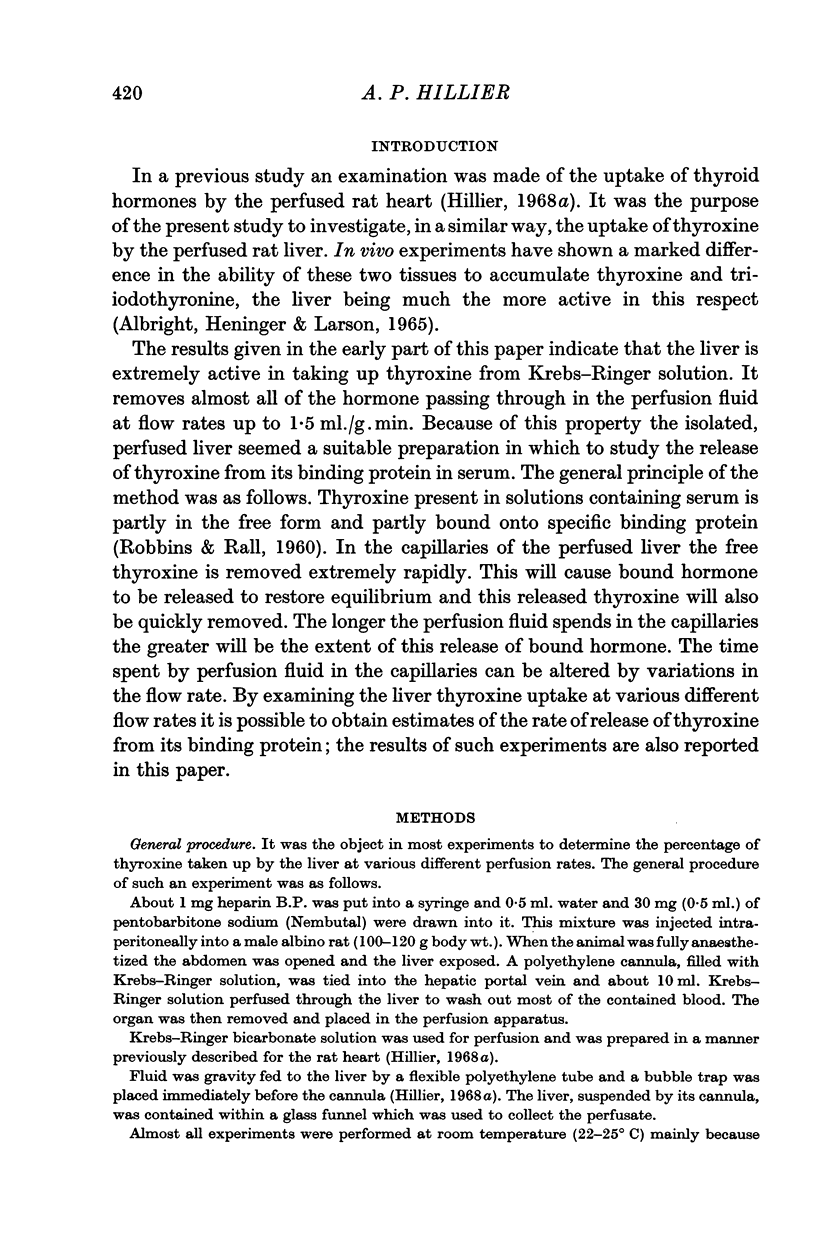

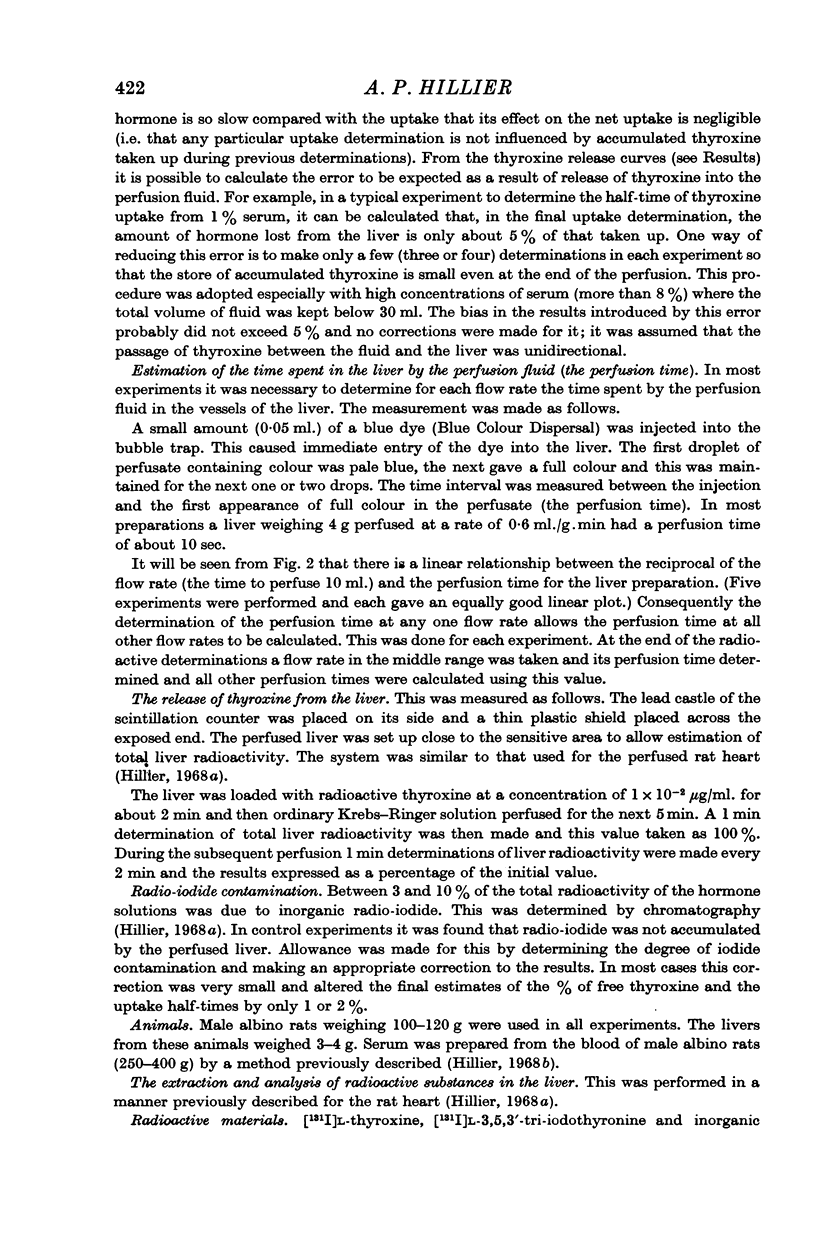
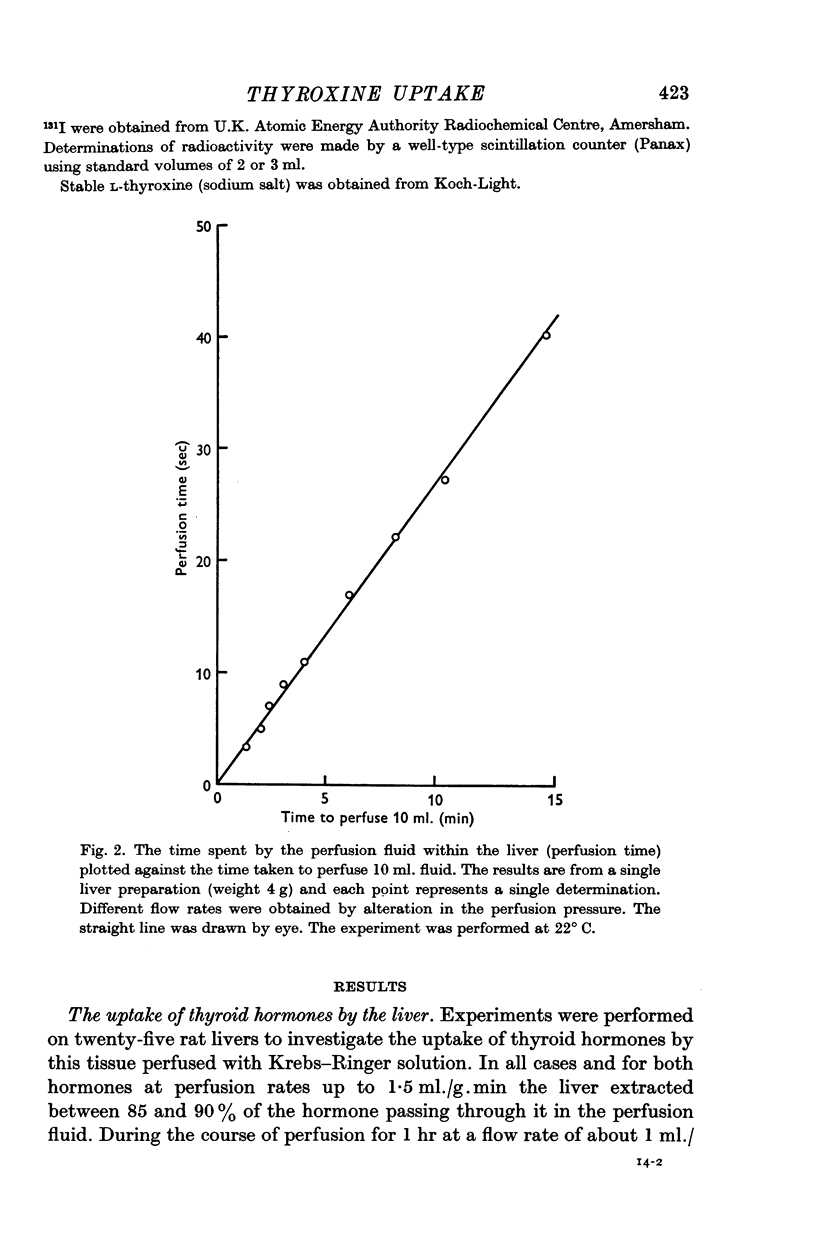
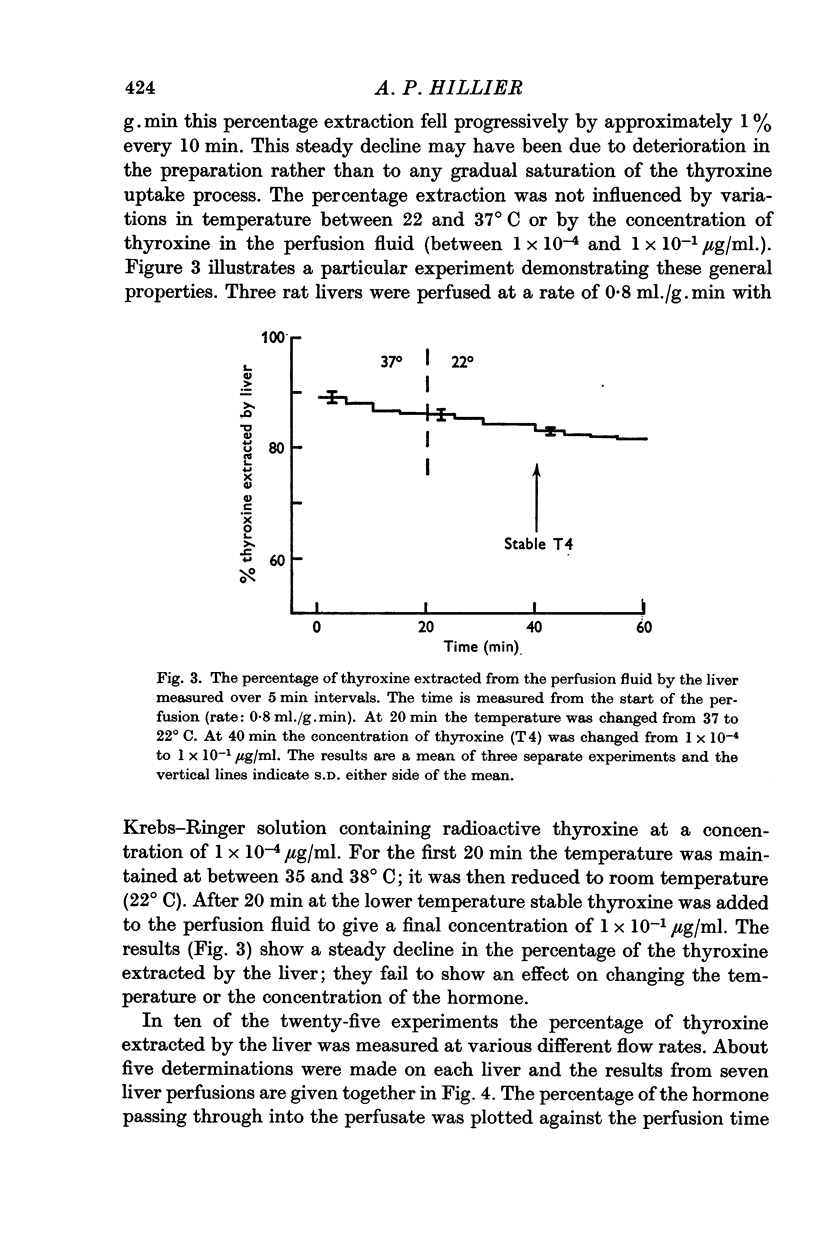
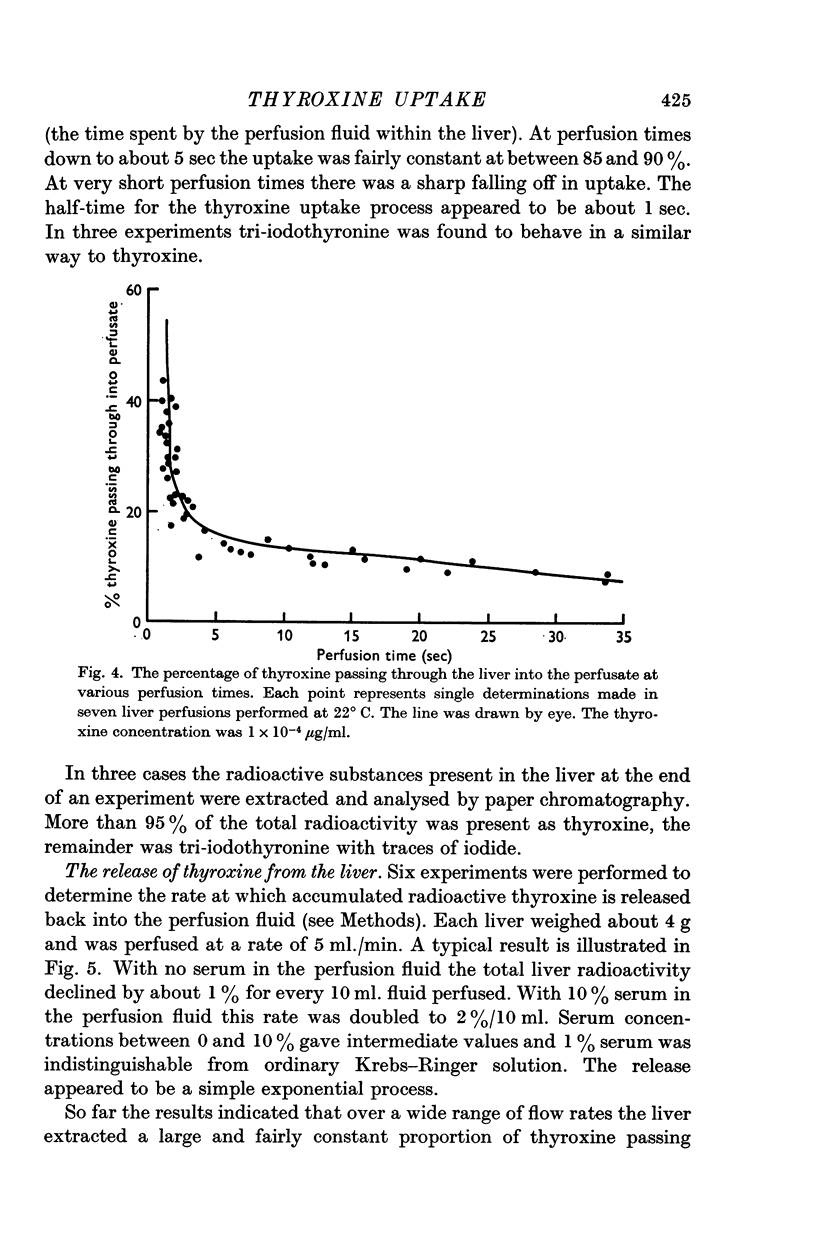
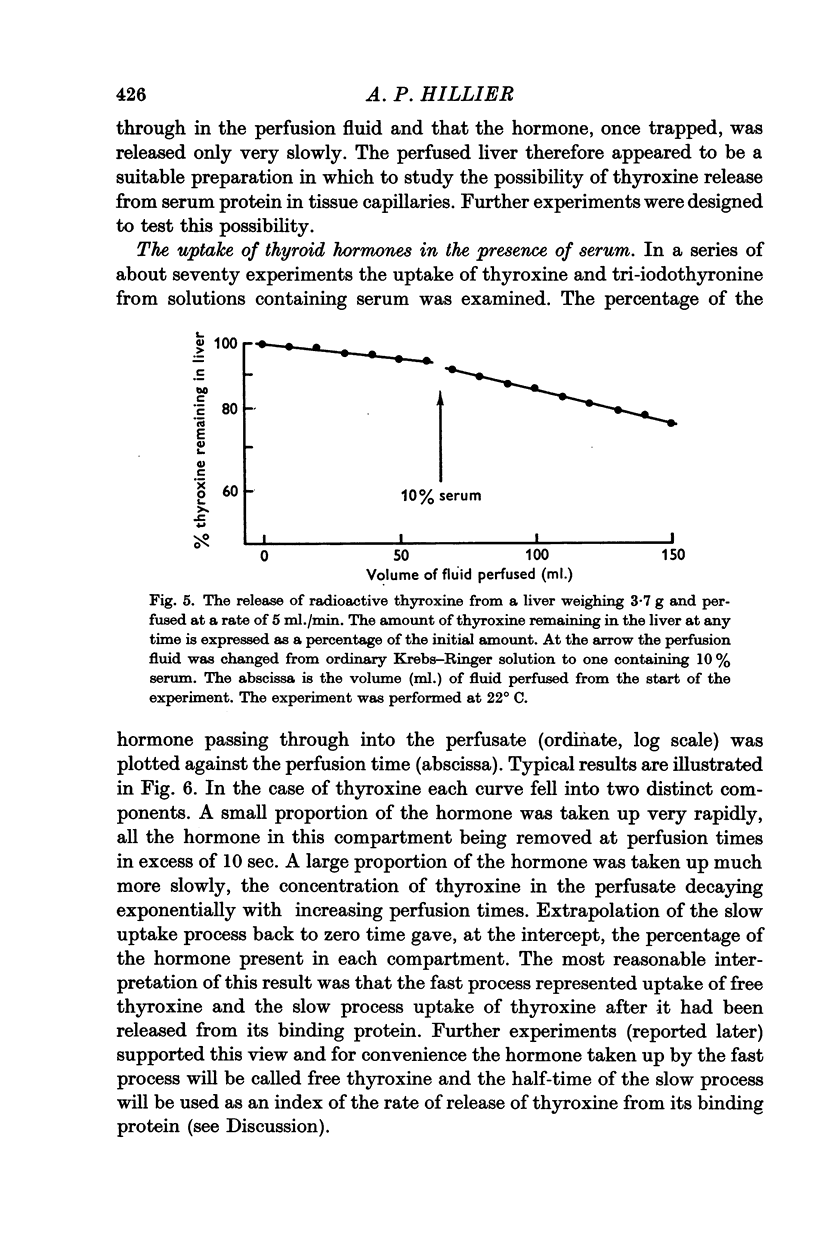
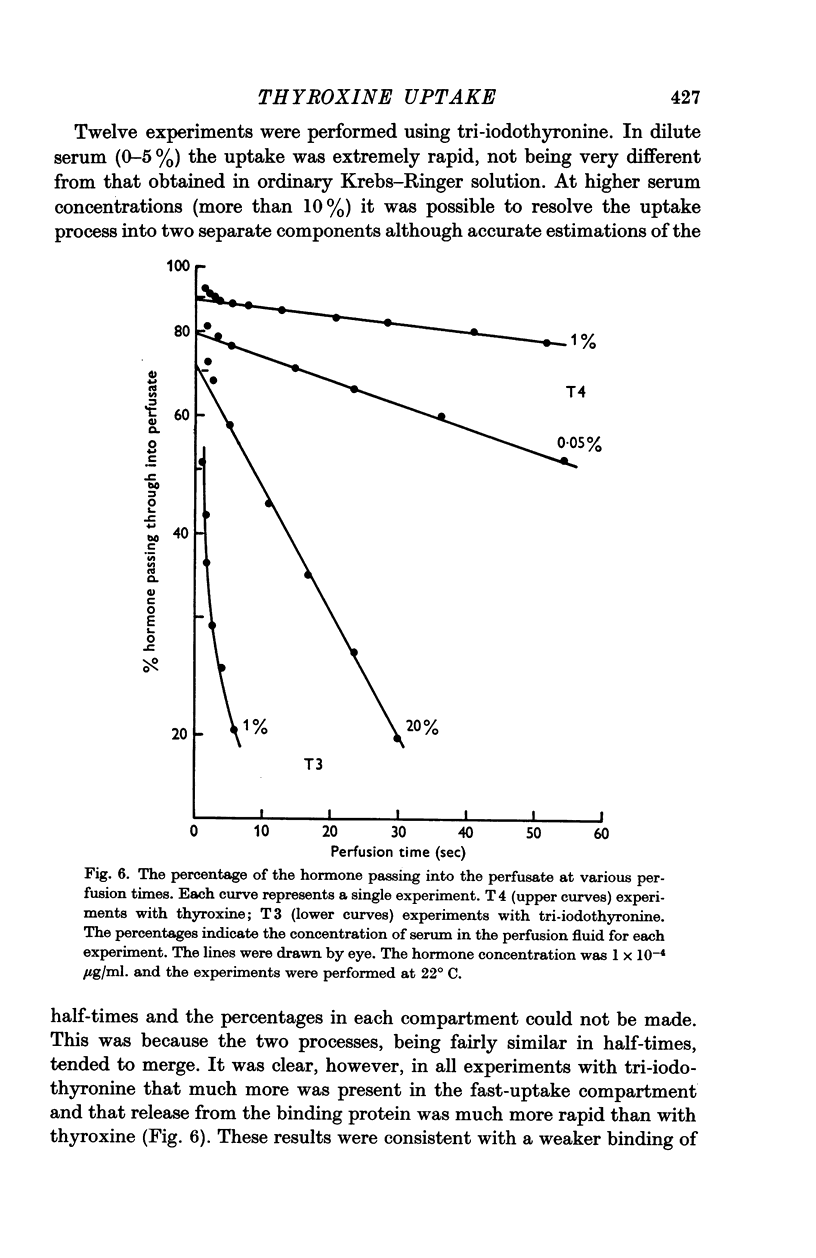
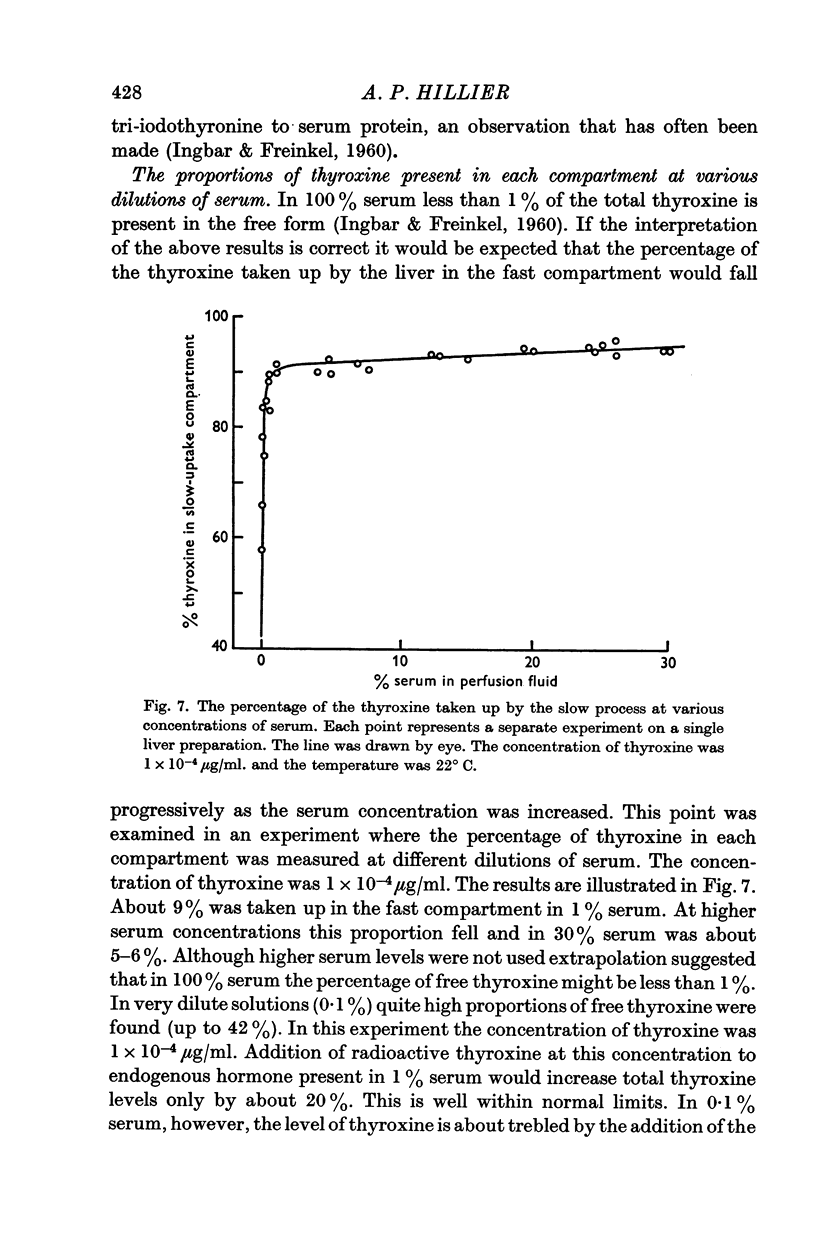
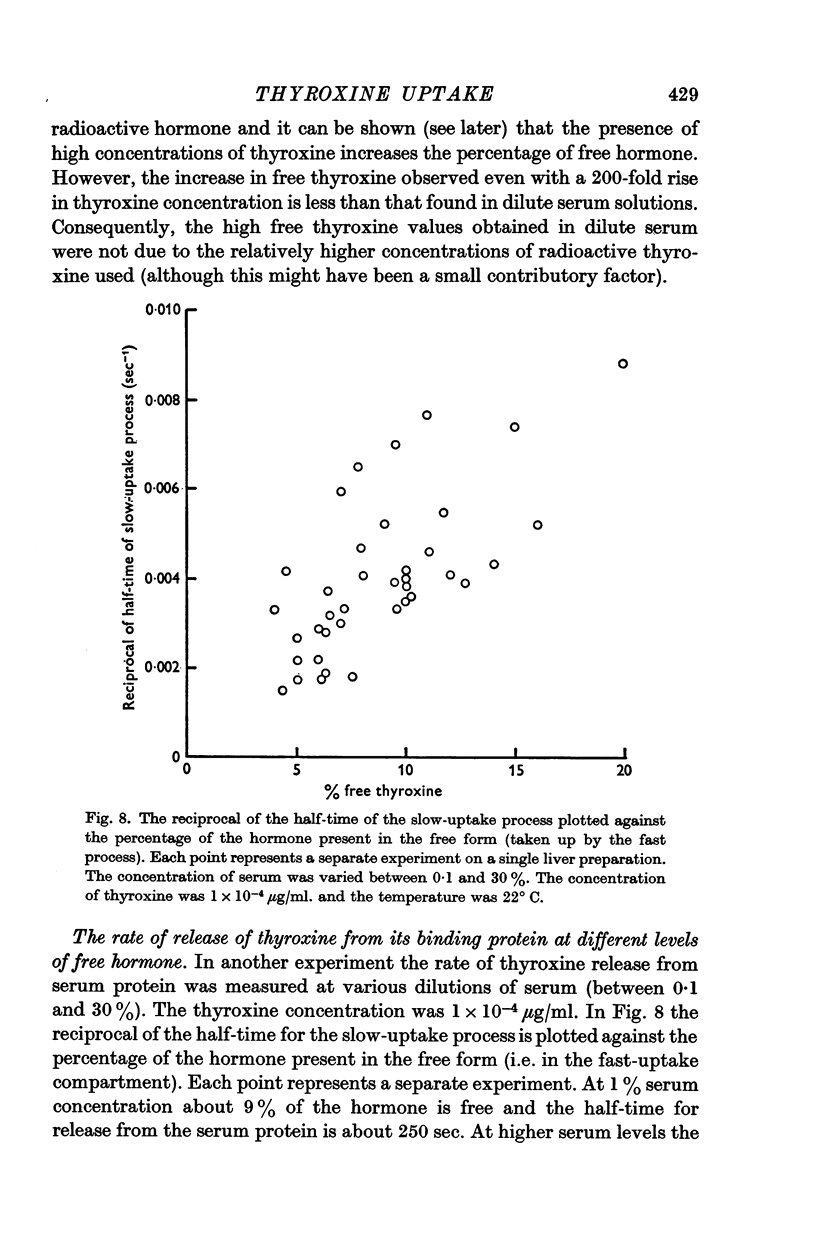
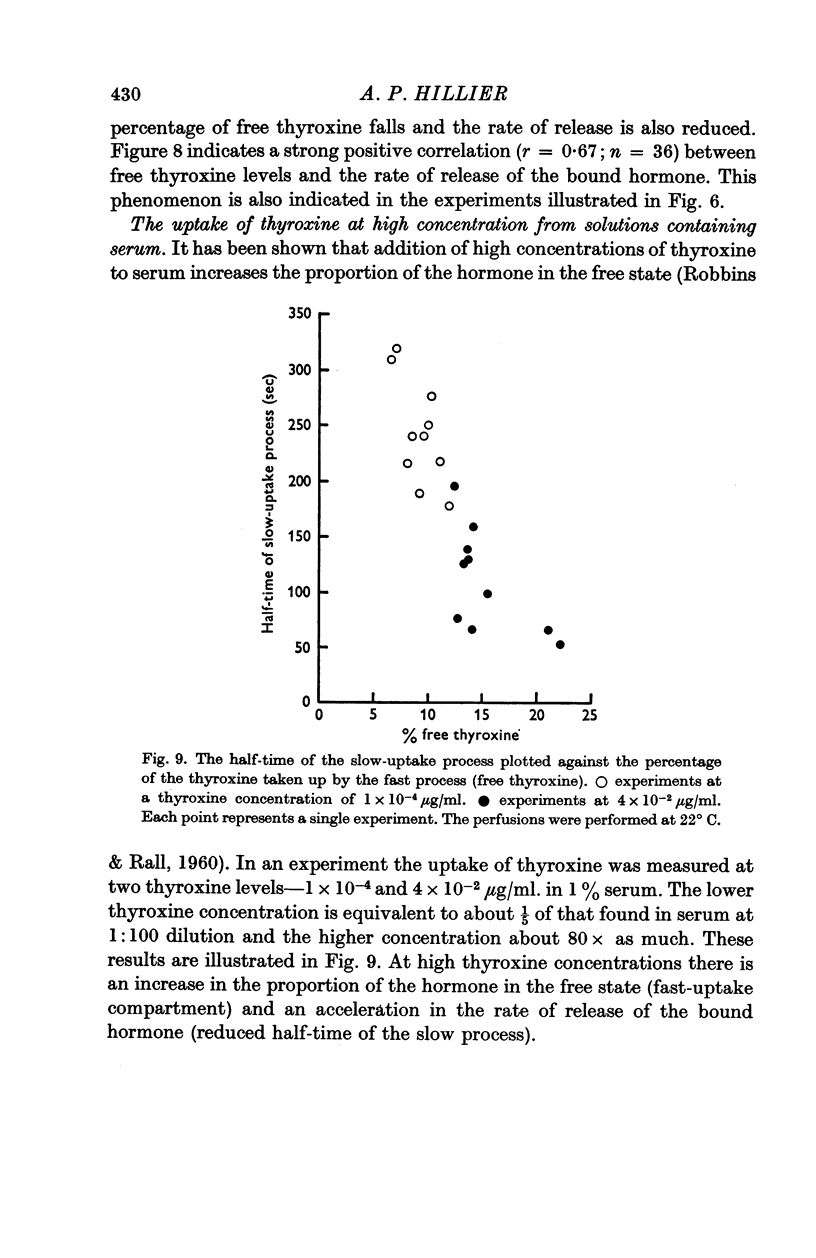
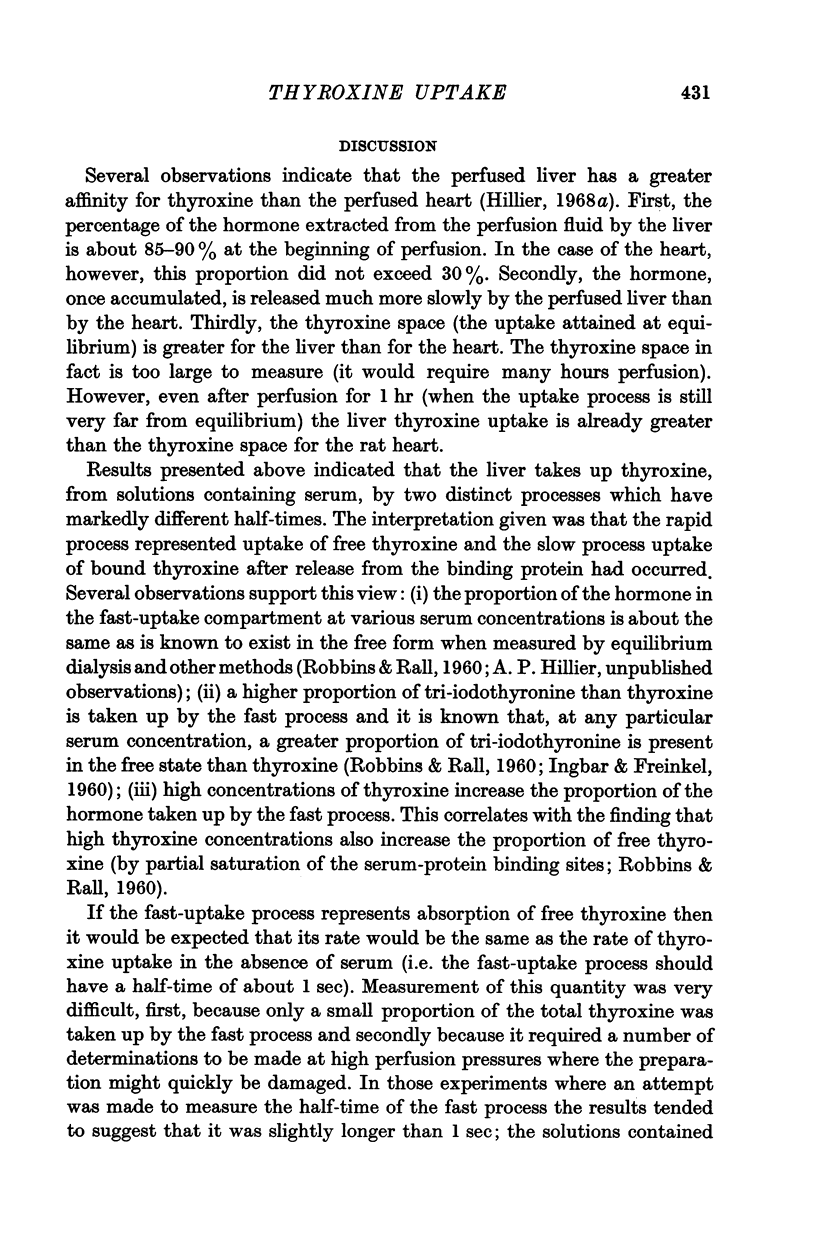
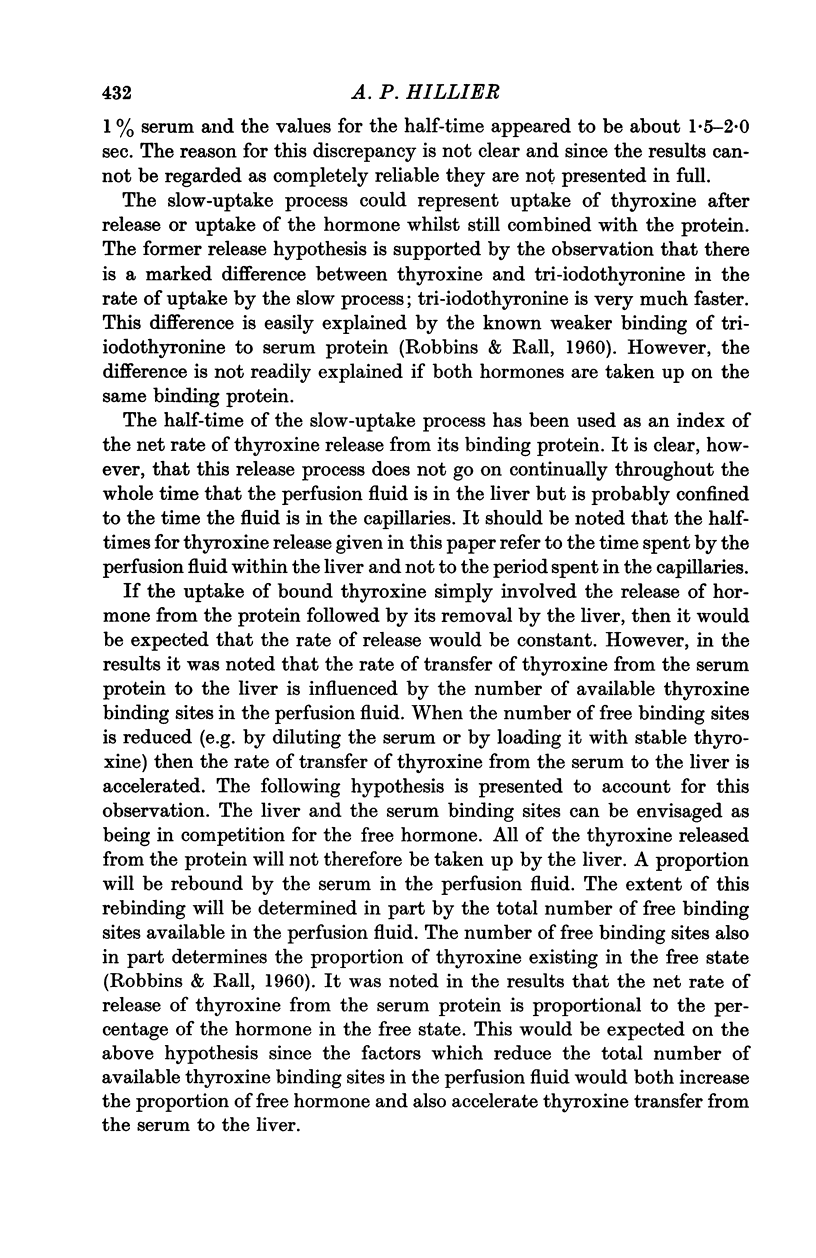
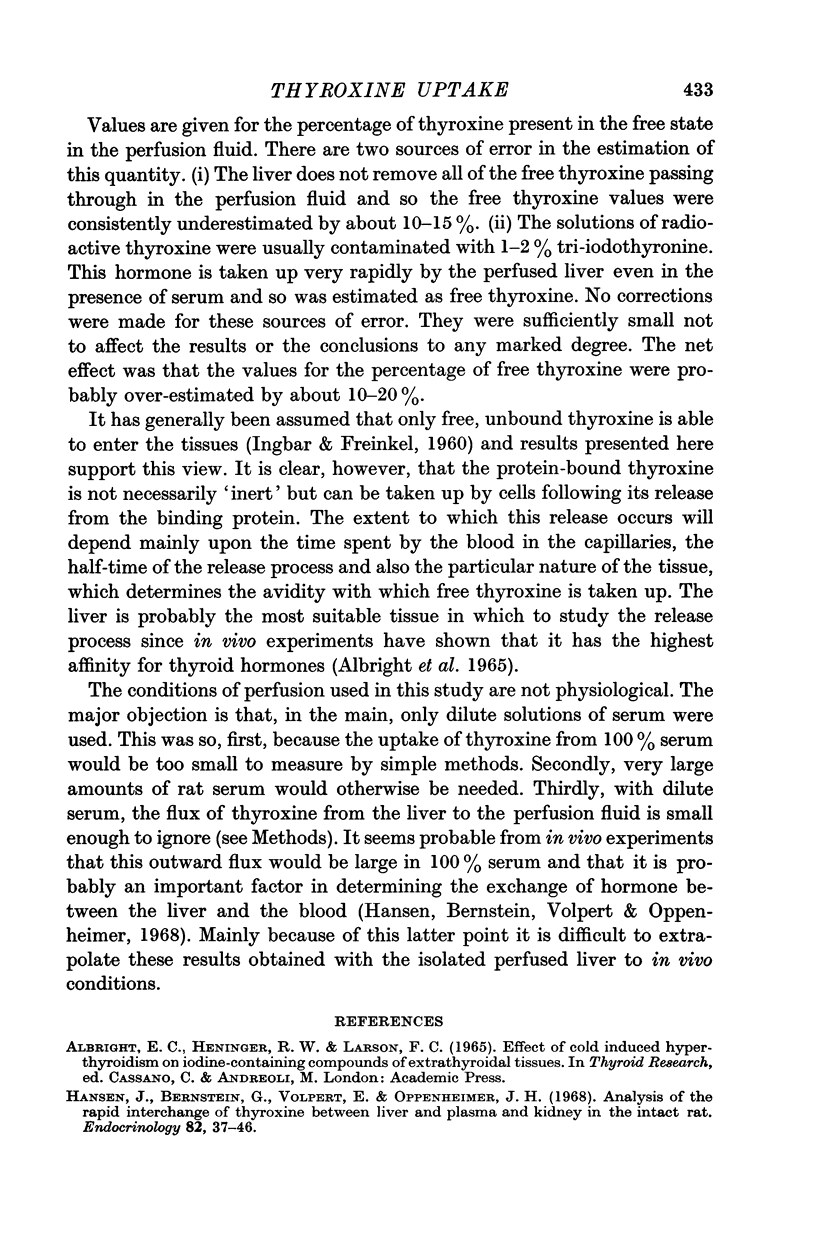

Selected References
These references are in PubMed. This may not be the complete list of references from this article.
- Hasen J., Bernstein G., Volpert E., Oppenheimer J. H. Analysis of the rapid interchange of thyroxine between plasma and liver and plasma and kidney in the intact rat. Endocrinology. 1968 Jan;82(1):37–46. doi: 10.1210/endo-82-1-37. [DOI] [PubMed] [Google Scholar]
- INGBAR S. H., FREINKEL N. Regulation of the peripheral metabolism of the thyroid hormones. Recent Prog Horm Res. 1960;16:353–403. [PubMed] [Google Scholar]
- ROBBINS J., RALL J. E. Proteins associated with the thyroid hormones. Physiol Rev. 1960 Jul;40:415–489. doi: 10.1152/physrev.1960.40.3.415. [DOI] [PubMed] [Google Scholar]


